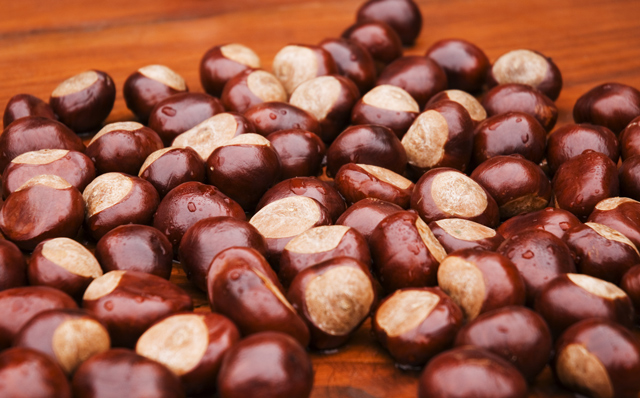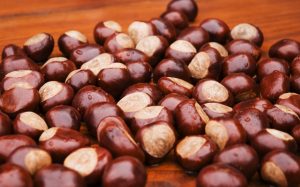
Chestnuts – sources, health benefits, nutrients, uses and constituents at NaturalPedia.com
Thursday, June 08, 2017 by Frances Bloomfield
http://www.naturalpedia.com/chestnuts-sources-health-benefits-nutrients-uses-and-constituents-at-naturalpedia-com.html

Chestnuts are fruits that come in a multitude of varieties, with the most popular ones coming from Europe and Asia. They are unique among nuts for a number of reasons: chestnuts are low in fat and calories, have a high moisture content, and are the only member of the nut family to contain vitamin C. As a carbohydrate-heavy fruit, chestnuts are also more similar to grains and tubers than other nuts when it comes to their nutritional makeup.
List of known nutrients
Chestnuts have so much vitamin C that a 100 g serving of chestnuts can provide 43 mg of the vitamin, or 72 percent of the daily recommended intake. The high amount of folate in chestnuts puts them on the same level as green leafy vegetables and makes them even more special among nuts. Chestnuts also provide:
- Copper
- Dietary Fiber
- Iron
- Magnesium
- Manganese
- Molybdenum
- Oleic acid
- Palmitoleic acids
- Potassium
- Protein
- Vitamin A
- Vitamin B1
- Vitamin B2
- Vitamin B6
- Zinc
Medicinal uses for chestnuts
Chestnuts are full of minerals, vitamins, and phytonutrients that contribute greatly to health. Having chestnuts as part of one’s diet can reduce the risks of:
- Anemia
- Atherosclerosis
- Bleeding
- Constipation
- Diarrhea
- Digestive Issues
- Dyspepsia
- Osteoporosis
- Rheumatoid arthritis
- Whooping cough
Body systems supported by chestnuts
A portion of chestnuts a day can maintain:
- Bones
- Brain
- Digestive system
- Heart
- Kidneys
- Liver
- Spleen-pancreas
- Tendons
Ways to use chestnuts
Due to their popularity, chestnuts are commercially-available in a variety of forms. Fresh chestnuts can be prepared for eating by roasting, deep frying, boiling, steaming, or even microwaving them. Since chestnuts are composed mostly of water, they have a lower shelf life than other nuts and can spoil quickly when exposed to air or humidity. Dried chestnuts do better in room temperature, but should still be kept away from moisture and sunlight; dried chestnuts are also more suitable for soups and stews than their fresh counterparts.
Chestnut flour can be used in baked goods just like grain flours. Food items such as cakes, pasta, and polenta can all be made using chestnut flour. Sweetened and unsweetened puréed chestnut is also available.
Where to learn more
- C is for chestnut and vitamin C
- Top 5 Health Benefits of Chestnuts
- 12 Amazing Health Benefits Of Eating Chestnuts
- The Ultimate Modern Paleo Approved Food List
- Vegan Competing Bodybuilders – Yep, That’s Possible
Summary
With their high concentration of vitamin C, chestnuts are great for boosting the immune system.
Copper and magnesium are two nutrients that assist in bone growth and development, and chestnuts have both.
Age-related bone disorders like osteoporosis can be slowed down or even prevented by consuming chestnuts.
Pregnant women are encouraged to consume chestnuts because of their folate, a vitamin that plays a role in protecting fetuses from neurological defects.
Chestnuts also have one of the richest concentrations of dietary fiber in comparison to other nuts. Dietary fiber is a must-have nutrient to prevent gastrointestinal problems like constipation and diarrhea since dietary fiber keeps bowel movement regular.
Because chestnuts are gluten free, they’re a common ingredient in food formulas intended for individuals with Celiac disease, gluten sensitivity, and wheat allergies.
Chestnuts are also notable for their low phytic acid content. Phytic acid is a substance that impairs mineral absorption and can even promote mineral deficiencies.
As with other nuts, chestnuts are not suitable for individuals who suffer from tree nut allergies, regardless of the severity of the allergies.
Sources include:
TheSpruce.com
Nutrition-And-You.com
OrganicFacts.com
PaleoLeap.com
BBC.co.uk
Tagged Under: Tags: chestnuts






